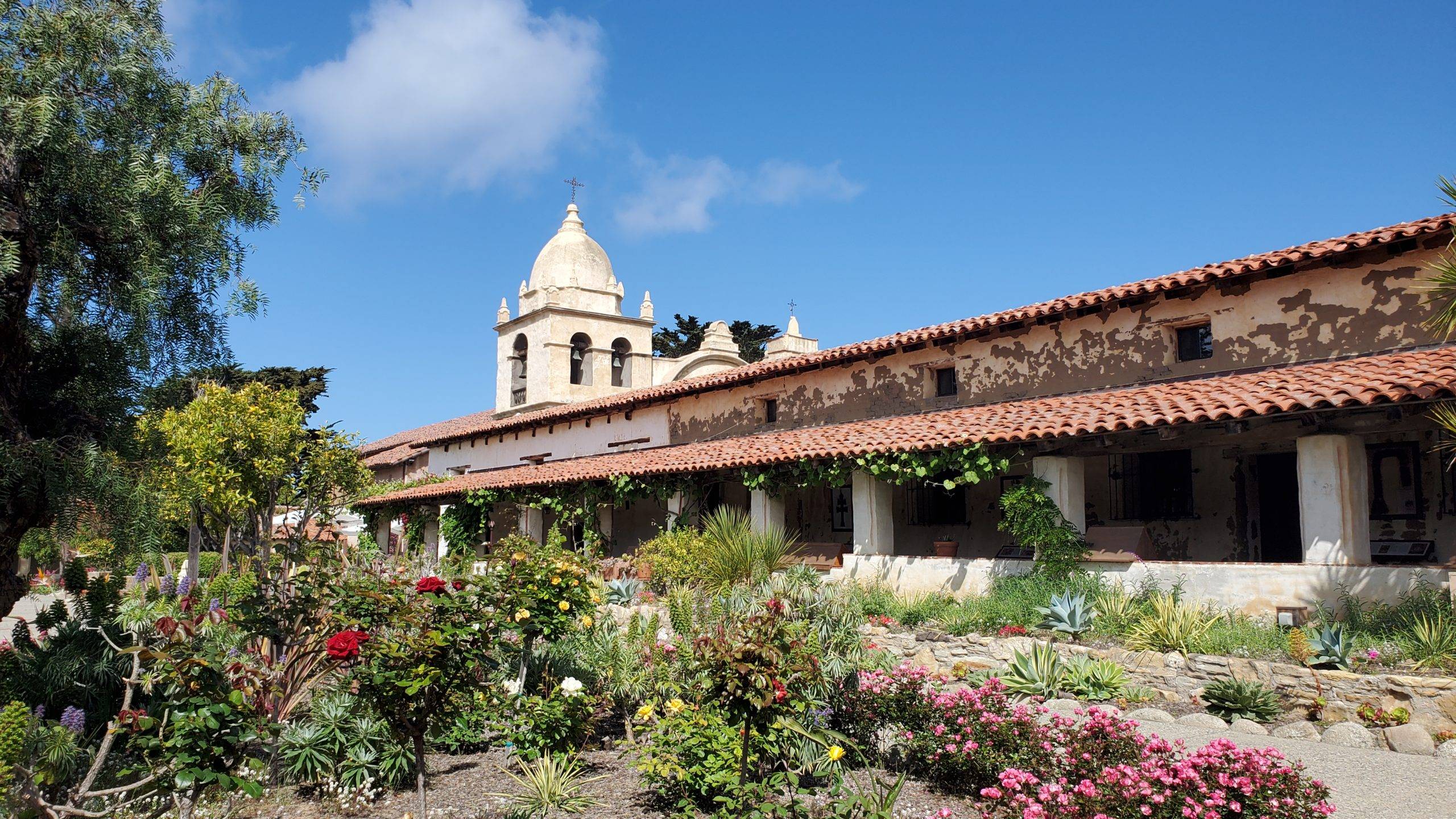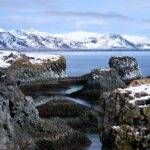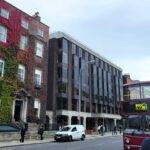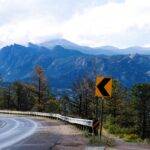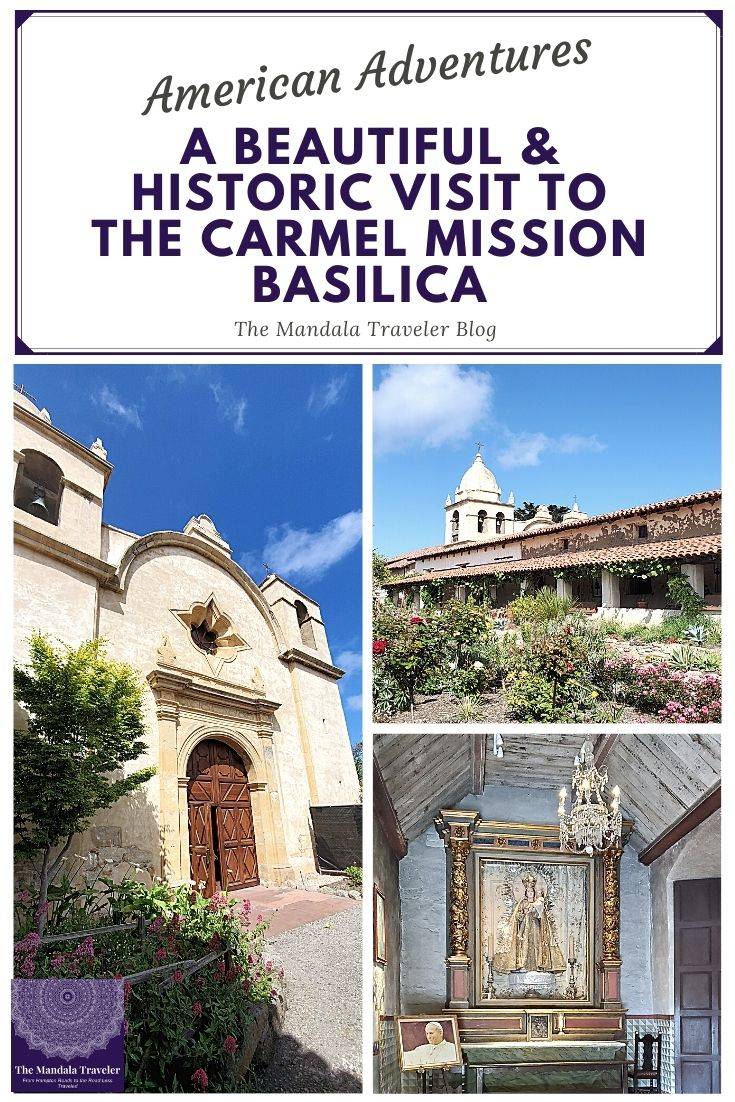It turns out that I couldn’t quite help myself, so I’m writing one final post about our visit to Carmel-by-the-Sea, California. However, this one is different from any of my posts about the town or surrounding landscapes. Today, I’d like to wrap up this mini-series the same way we ended our visit: with the Carmel Mission!
Just outside the town of Carmel-by-the-Sea, you’ll see the beautiful grounds of the Carmel Mission, originally built in 1771! The mission was founded by Father Junipero Serra, who founded another 20 missions throughout California before he died.
The mission is a national and state landmark and still functions as a Catholic parish and school! However, I’ll be focusing on the museum side of the mission and what you can expect to see.
Don’t forget to watch our YouTube video to see stunning footage of the grounds, chapel, and more!
FAQs About the Carmel Mission Basilica
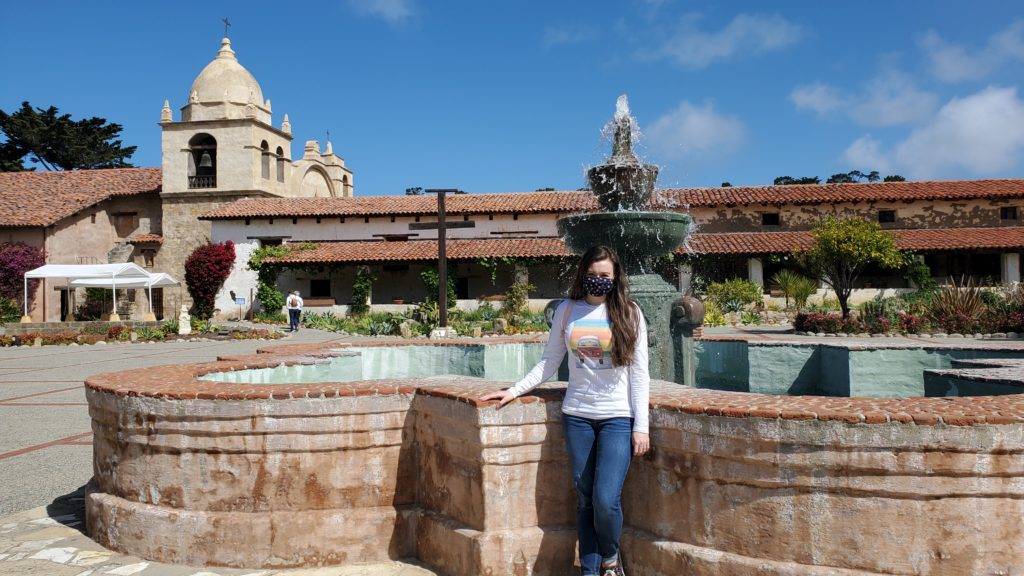
- How much does it cost to tour? The Carmel Mission costs $10 per adult, with discounts for seniors and kids.
- When is it open? The mission is closed on Mondays and Tuesdays, so be sure to plan around that. It’s open Wednesday & Thursday from 10 am to 4 pm, Friday & Saturday from 10 am to 5 pm, and Sunday from 11:30 am to 5 pm.
- How long does it take to tour the mission museum? If you do a self-tour, I would leave 60 to 90 minutes to fully read and appreciate everything. You can also schedule a guided tour, which takes closer to 2 hours.
- Where is the Carmel Mission? The Carmel Mission is just outside Carmel-by-the-Sea, California, on the Pacific coast. The address is 3080 Rio Road, Carmel, California 93923.
What to See at the Carmel Mission Basilica
Stunning Grounds
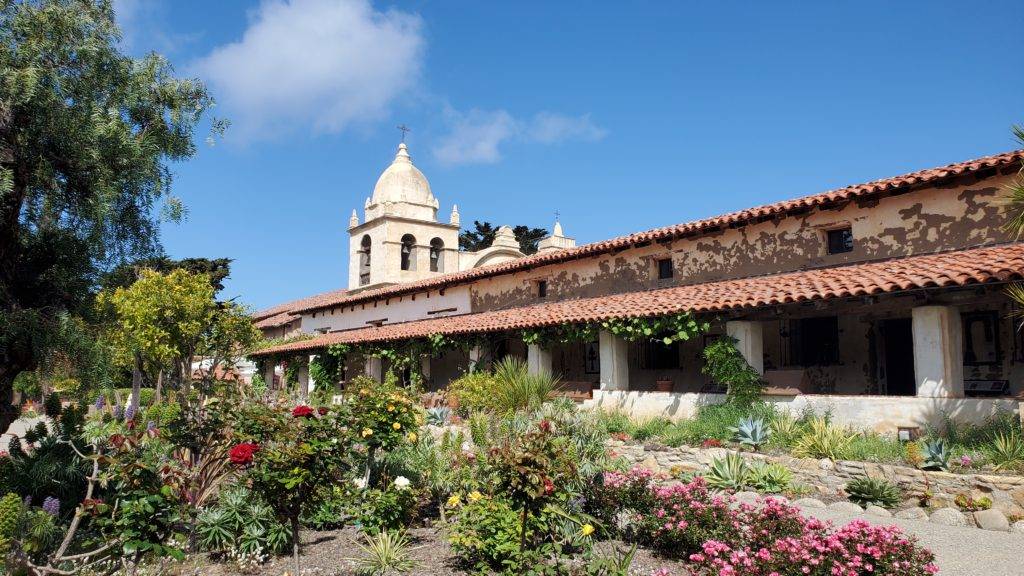
The first thing you’ll see when you walk through the heavy wooden doors of the mission is a beautiful courtyard, complete with gardens, an ornate fountain, Monterrey cypress trees, and a monument centered around the mission’s original bell from 1820.
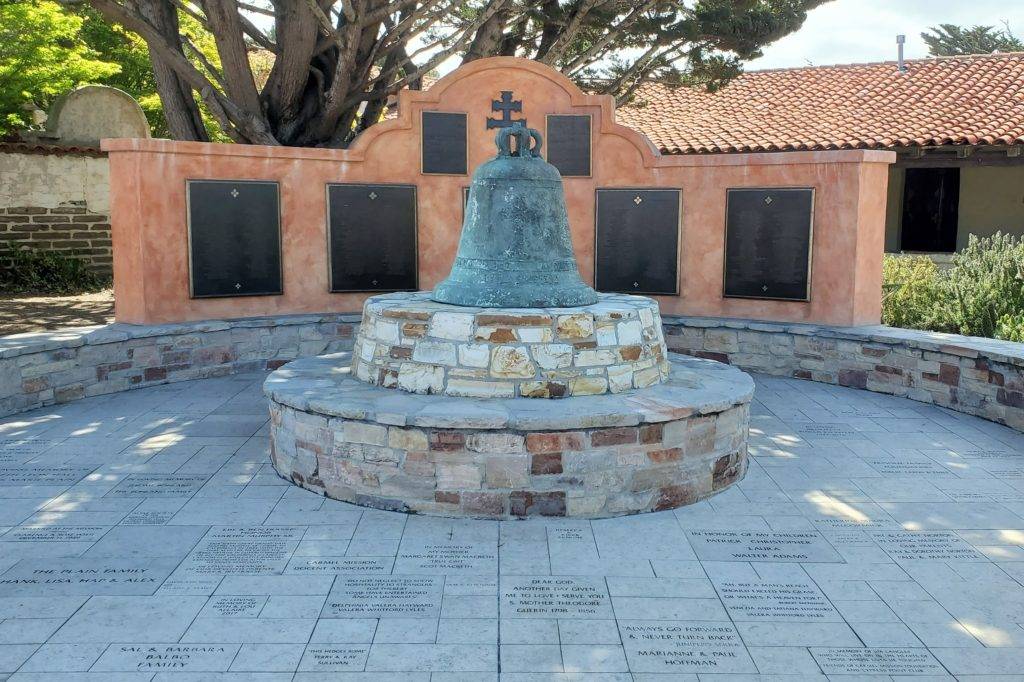
In addition to the beauty within the courtyard, you’ll see the gorgeous mountains off in the distance from this vantage point.
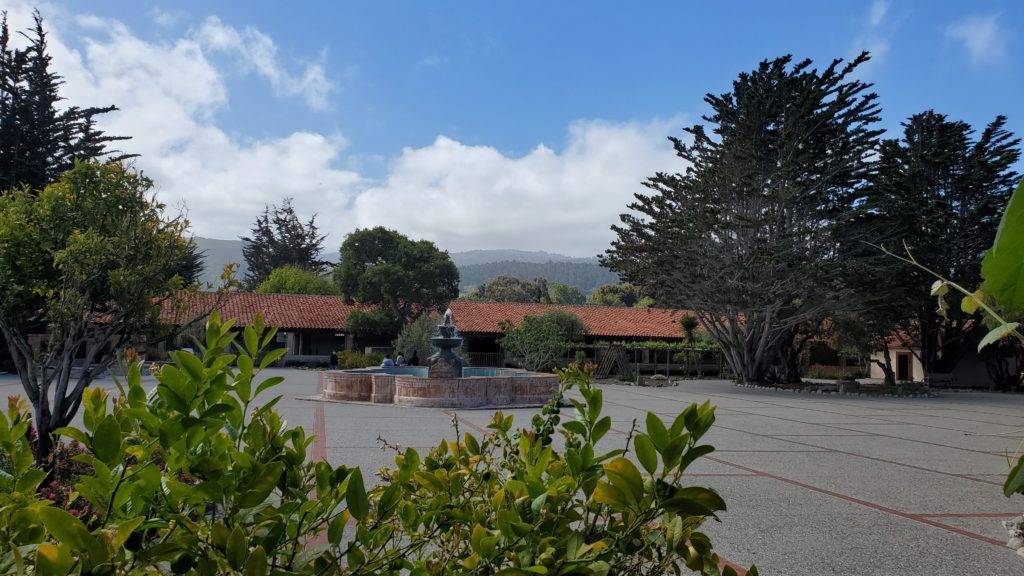
The courtyard was recently restored in 2016, after unfortunately falling into disrepair over the years. The result is a bright and beautiful space that mirrors the color and style of the mission buildings.
From the courtyard, you can see the beautiful sand-colored towers of the chapel and the length of the terra-cotta roofed museum. There are also some lovely places to sit or walk, including the Serra Memorial Prayer Garden, which features the mission’s original fountain that had been lost for decades after the mission was abandoned in the 1800s.
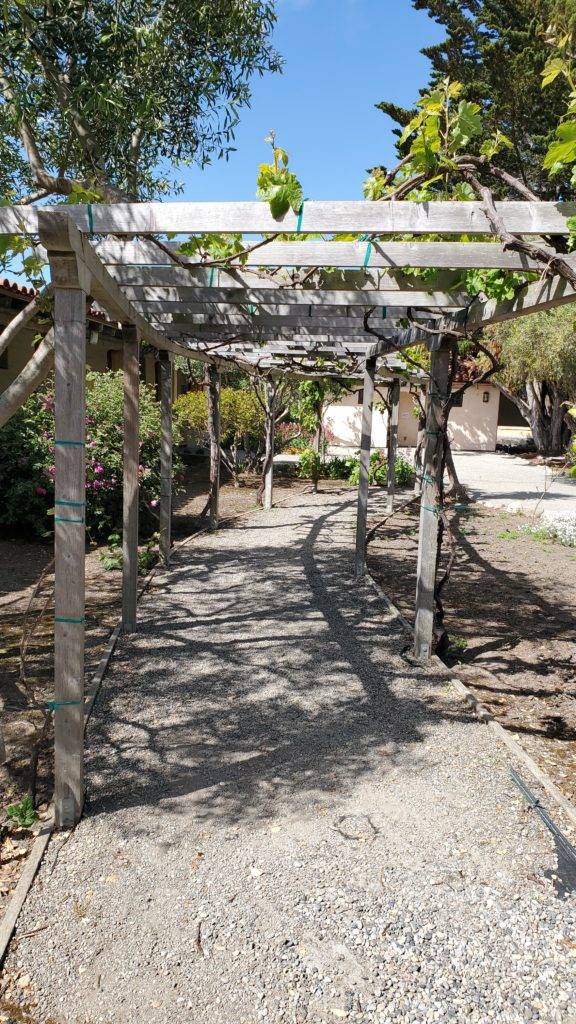
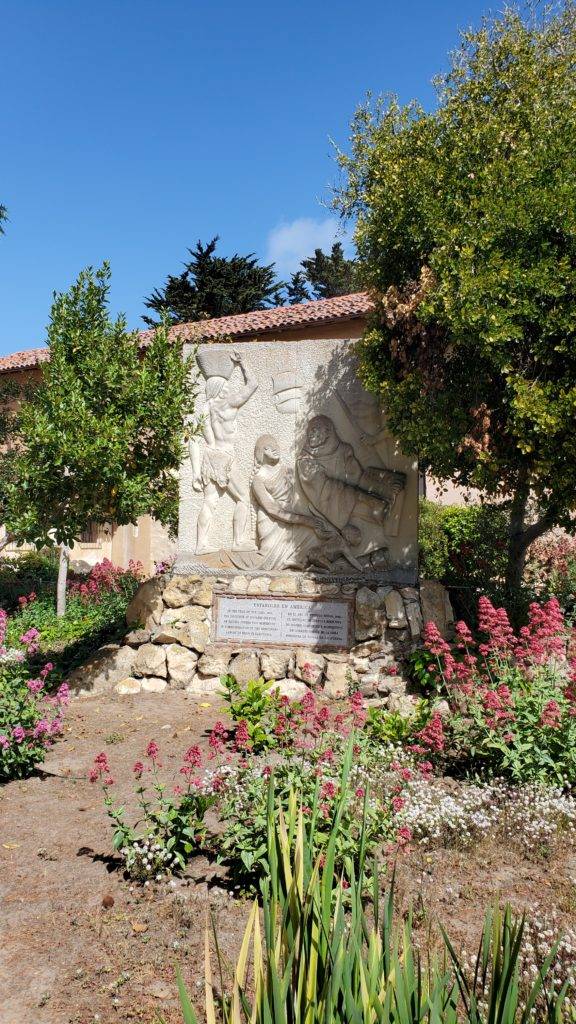
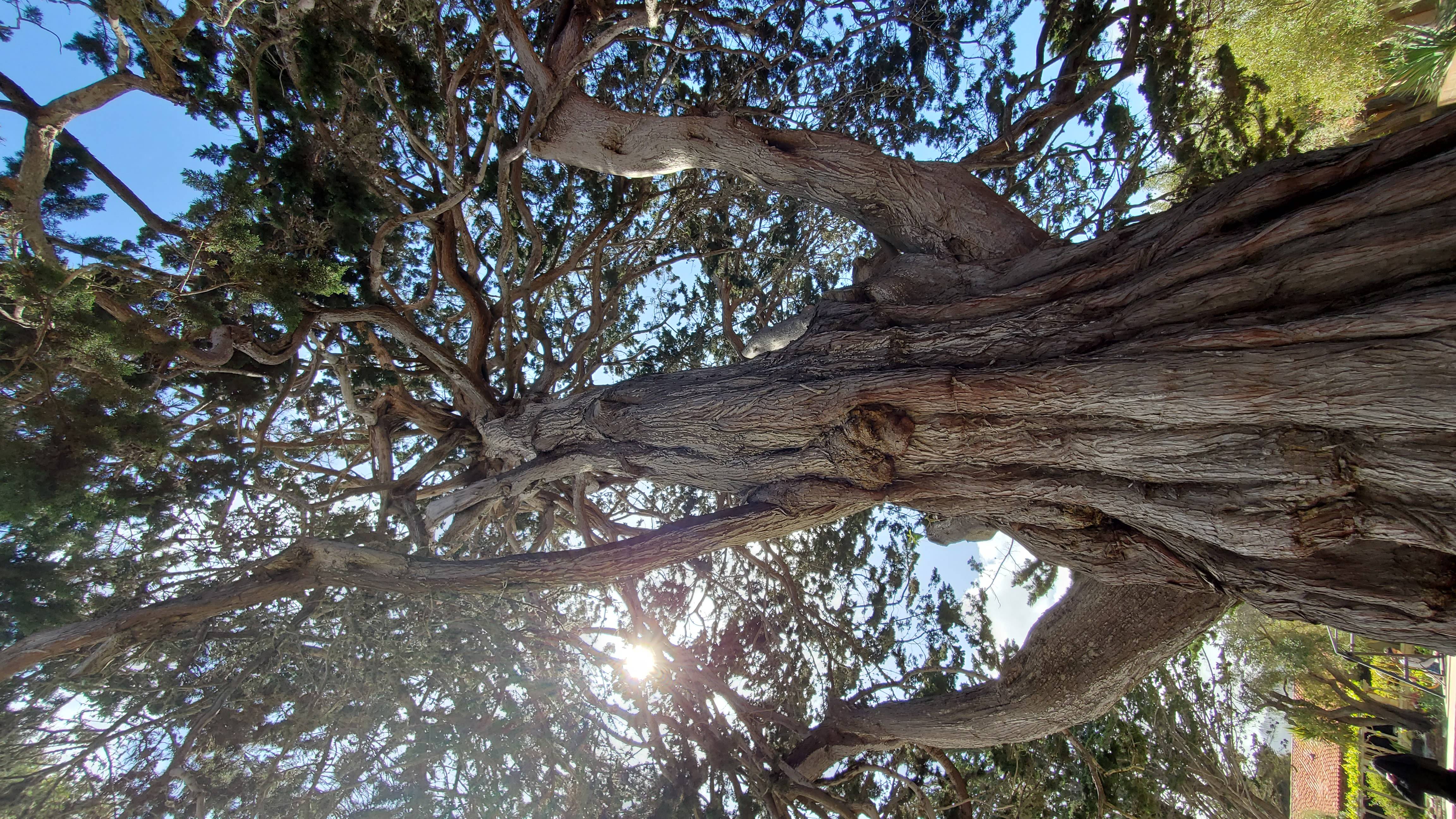
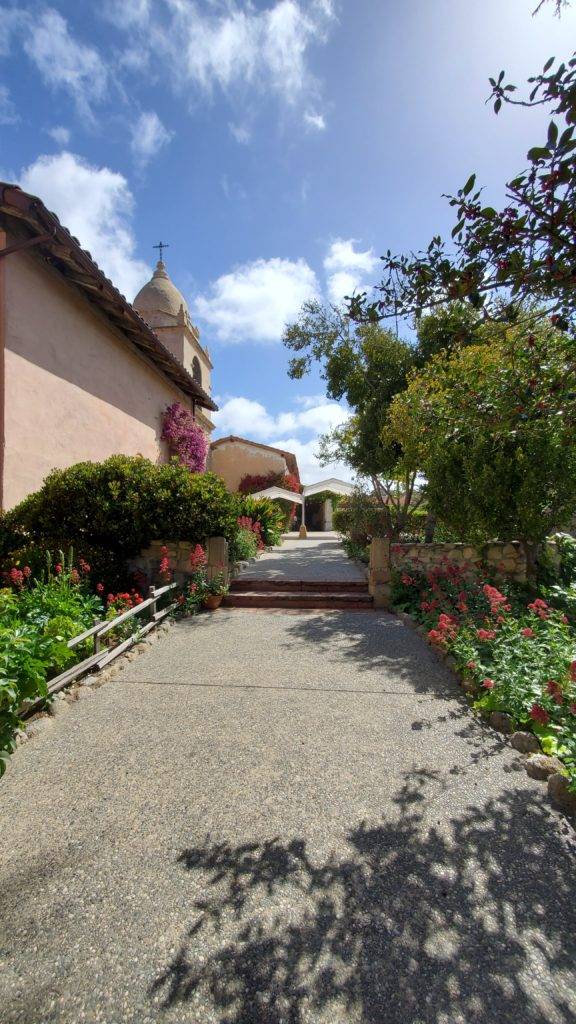
The final centerpiece is a double-cross erected in the main courtyard, known as the Caravaca Cross. This particular style of cross was very dear to Father Serra. And if I remember correctly, this spot is where he was originally buried.
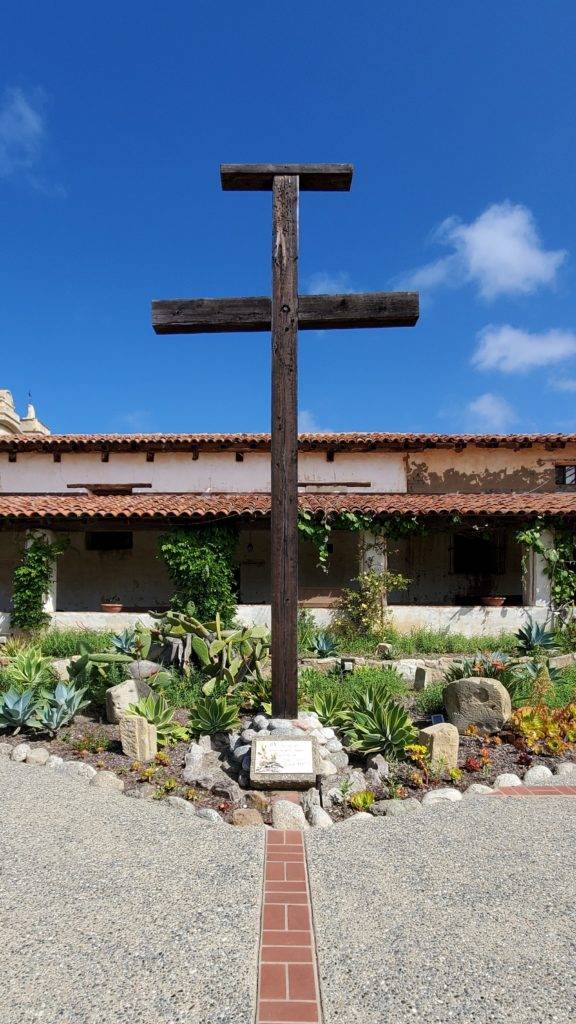
Religious Relics & Artwork
If you’ve ever visited a Catholic Church, you know that relics are a big deal, and many of them are incredibly ornate. The relics at the Carmel Mission are no different, and I enjoyed seeing the beautiful artifacts that they had on display in the small sanctuary, as well as learning about the history behind many of them.
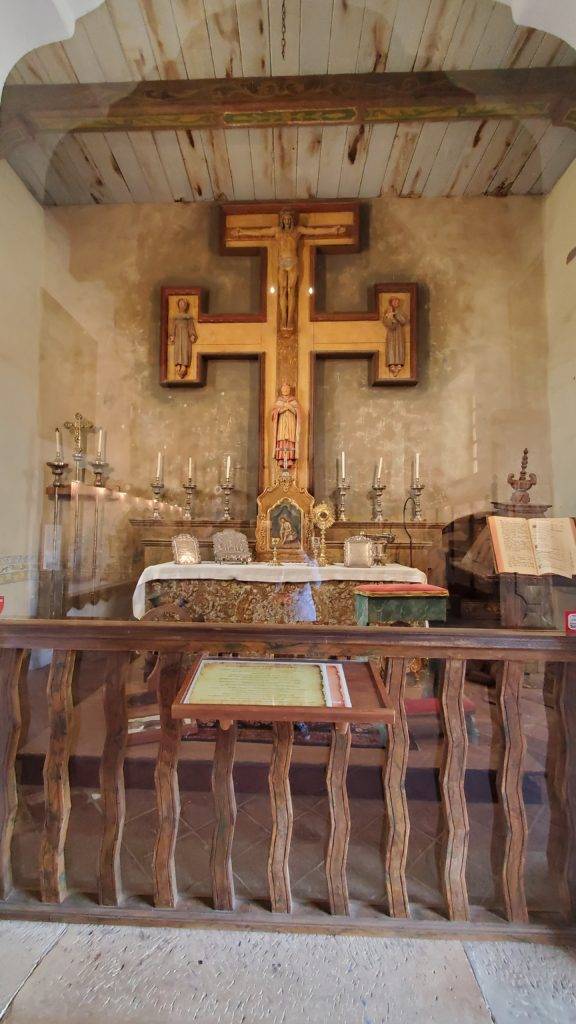
Almost all of the relics here were brought by or sent to Father Serra, including candlesticks, a missal stand, prayer cards, and an asperges bucket. Additionally, you can see chalices and a kneeler used by Pope John Paul II during a visit to the Carmel Mission.
The mission also shares the history of the Caravaca Cross (see photo above) because it was a very important symbol to Father Serra.
Within and to the side of the chapel, you’ll also get the chance to see some interesting religious art pieces that Father Serra brought to or ordered for the mission. One of the most notable is the giant Our Lady of Bethlehem statue, a donation from Mexico City’s archbishop in 1769. There is also a large nativity scene with dozens of figures and several paintings from the 1700s.
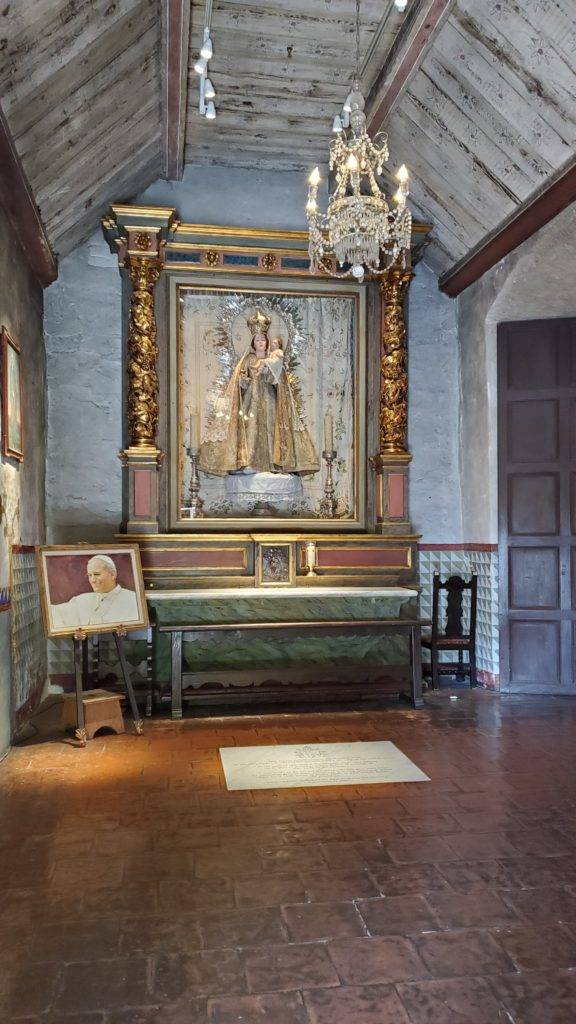
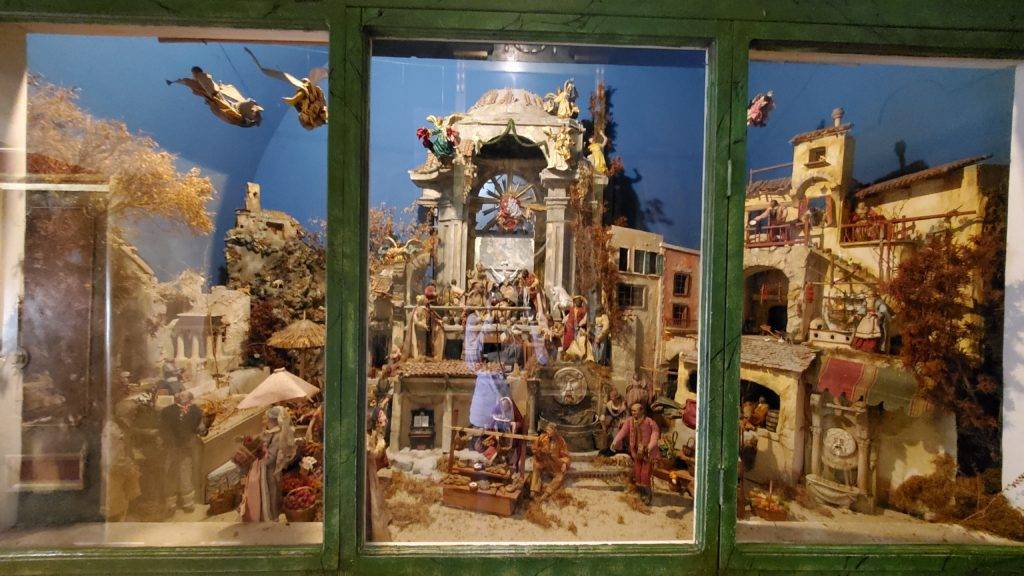
The Chapel
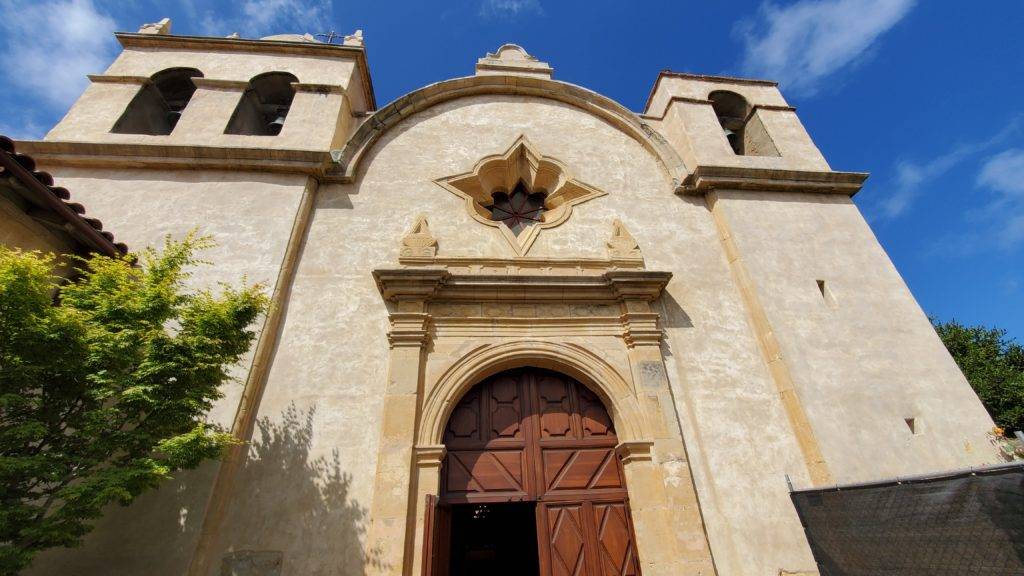
The main chapel of the Carmel Mission features vaulted white ceilings, a large pipe organ, simple chandeliers, and a colorful front altar. The whole room is rustic yet somehow elegant at the same time. We spent a minute just taking in the overall picture of the chapel before looking at the finer details.
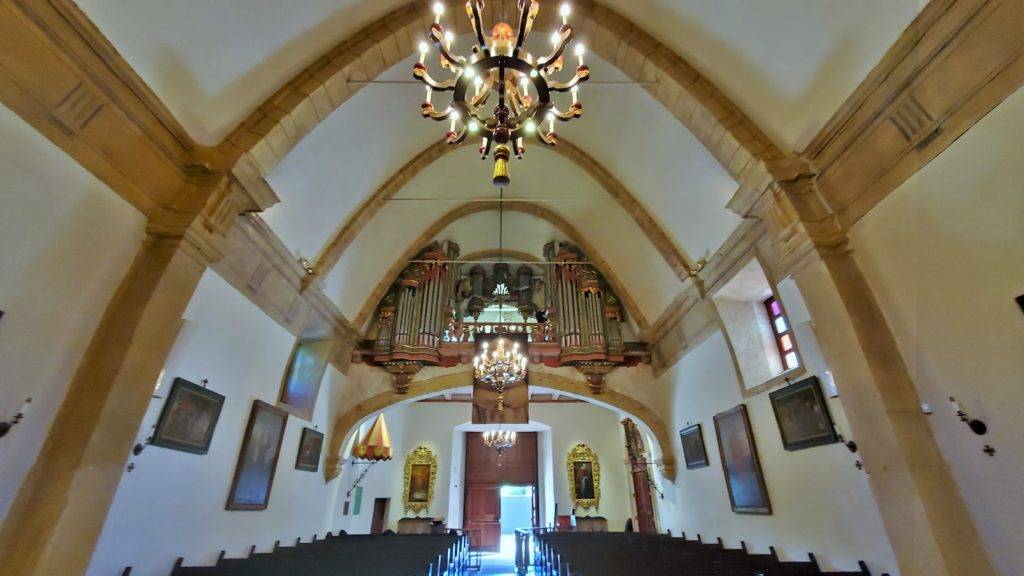
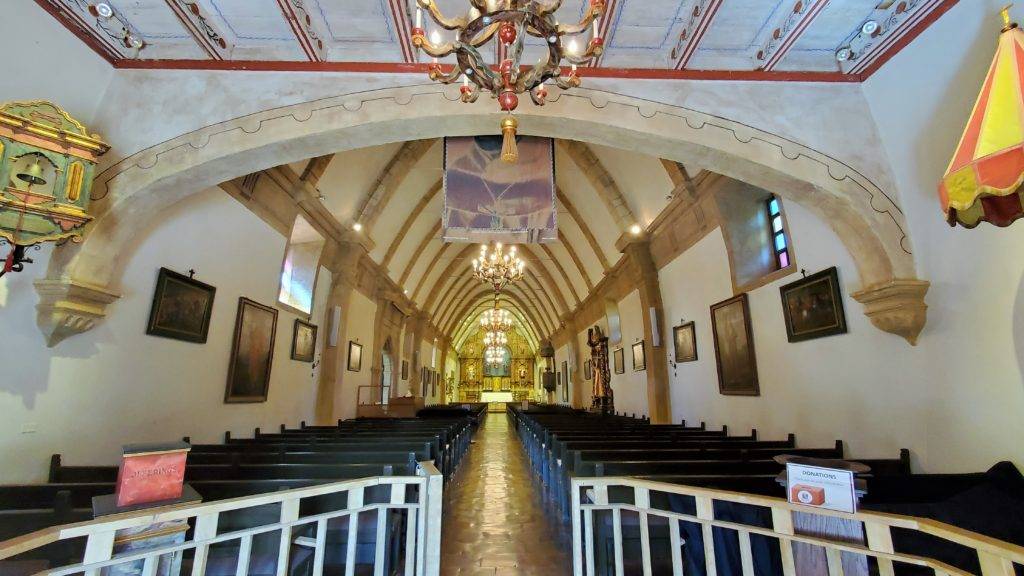
The front altar has cutouts filled with figurines of important religious figures and is topped with a dove flying across a burst of light. The walls all across the chapel feature paintings, statues, and more relics to discover as you walk down the aisle.
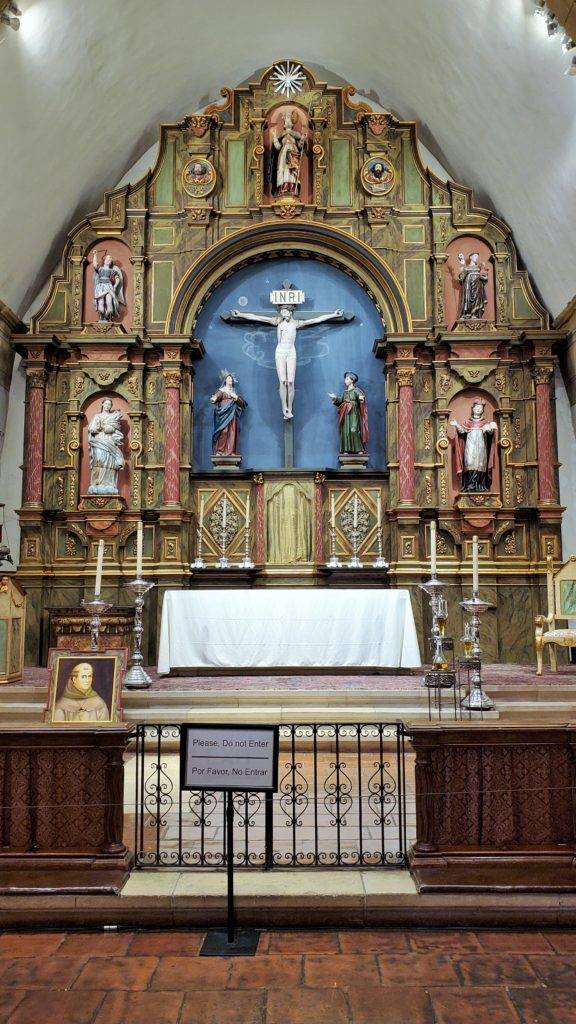
On the front of the right wall, there is even a special box holding wood from Father Serra’s original coffin.
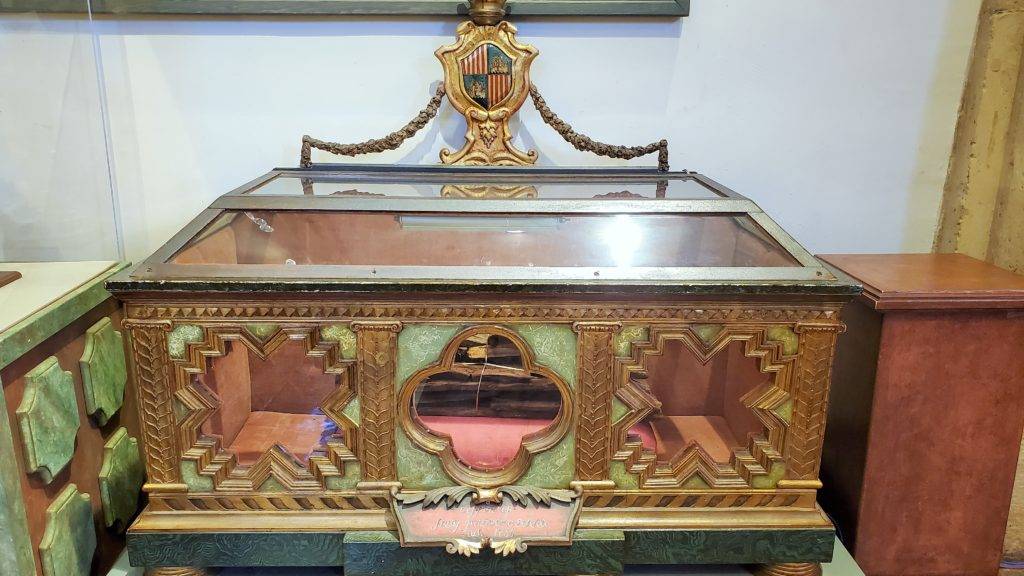
The Carmel Mission Museum
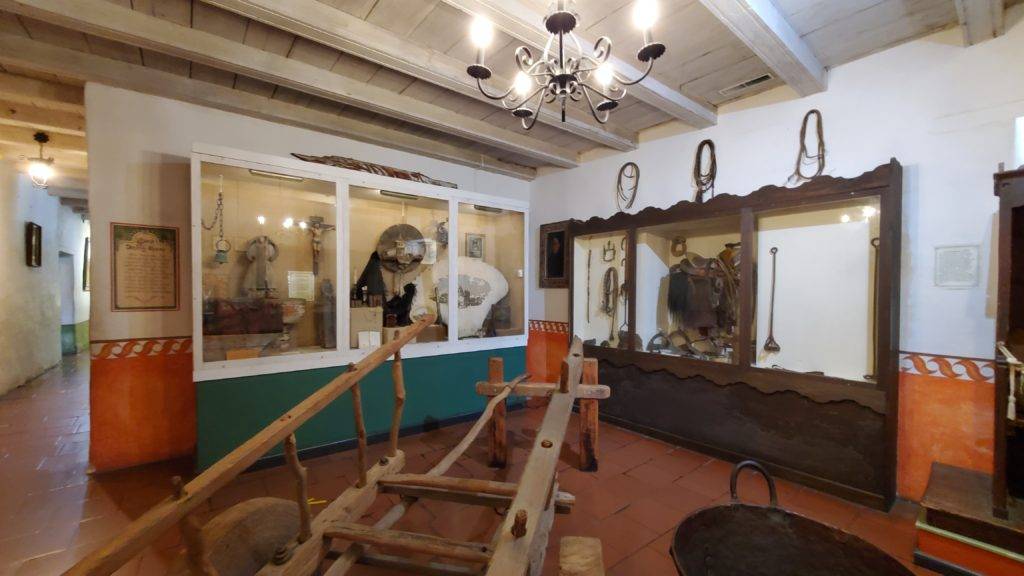
The actual museum portion of the tour is filled with fascinating info about the mission and the people who lived and worked there. Each room features a variety of artifacts, from a rawhide shield owned by Captain Cayetano Espinosa to a violin that was played during a visit by Robert Louis Stevenson.
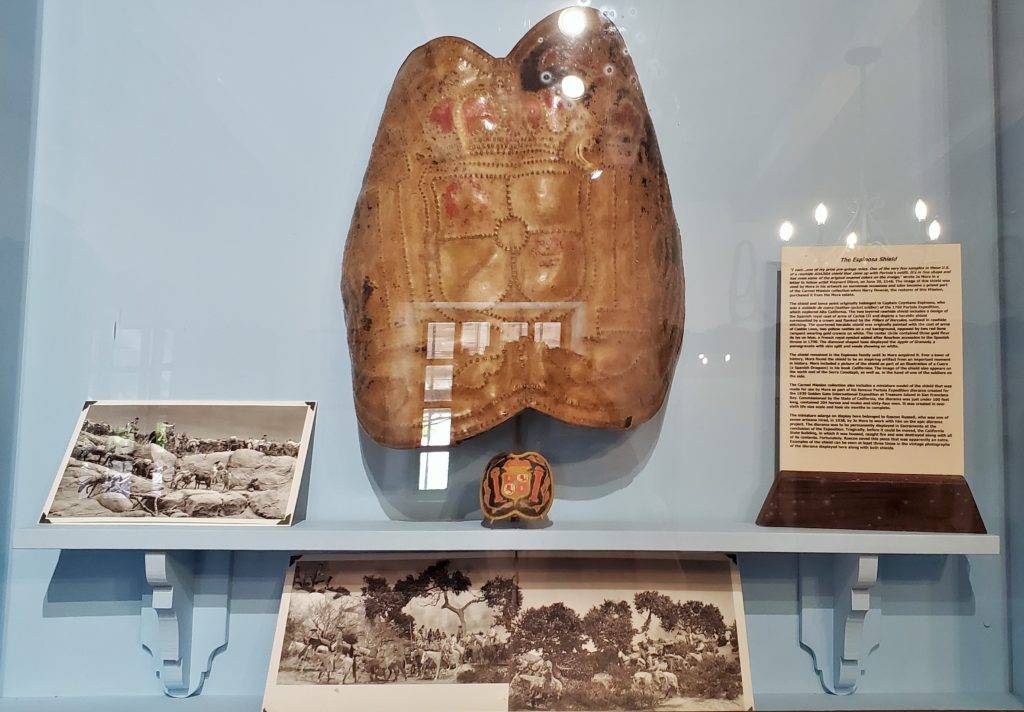
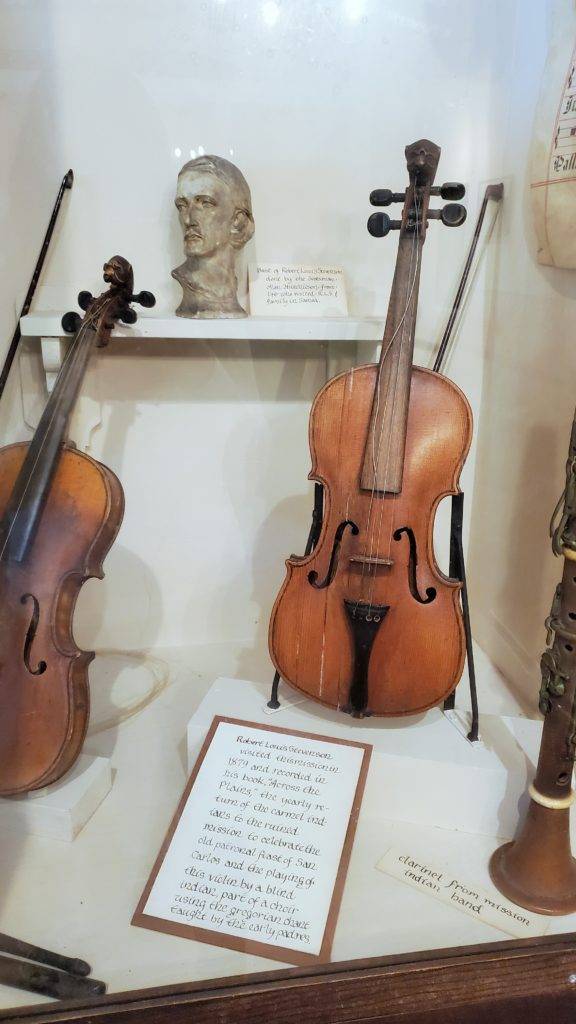
Some rooms are set up to demonstrate what life was like at the mission in early times, including a kitchen, bedroom, and Grand Sala. The final room is a cell-like chamber where Father Serra lived during his time at the mission.
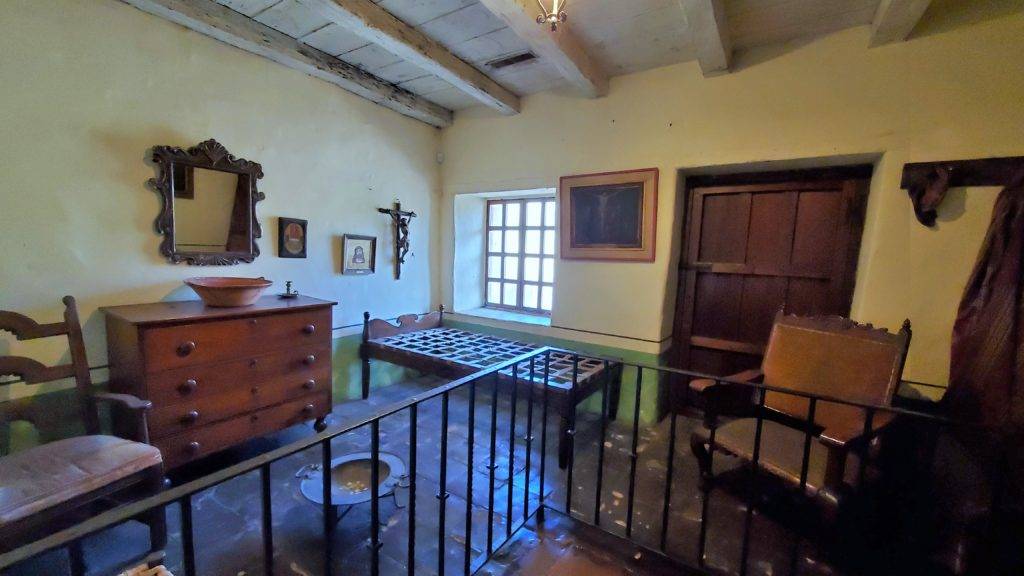
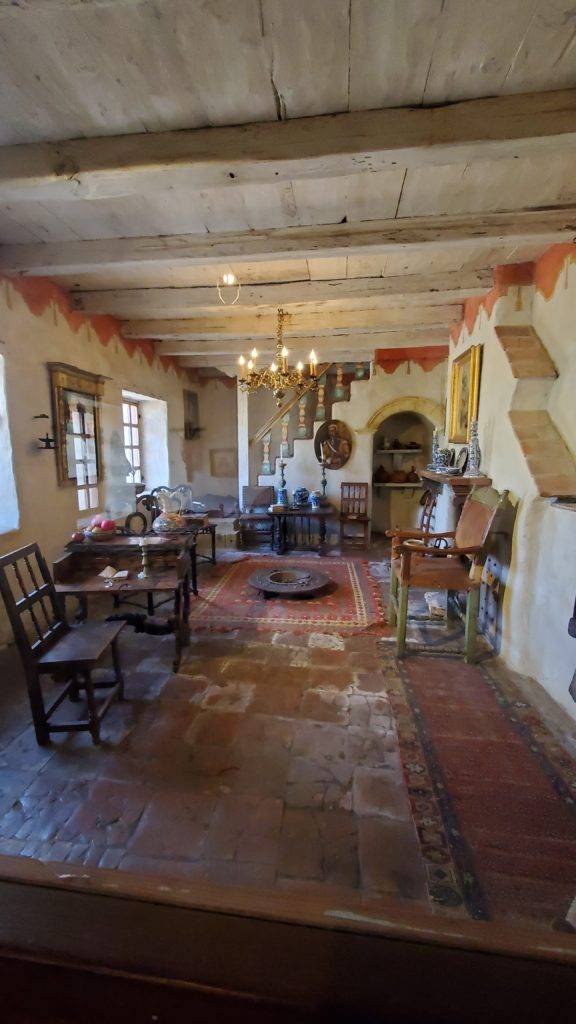
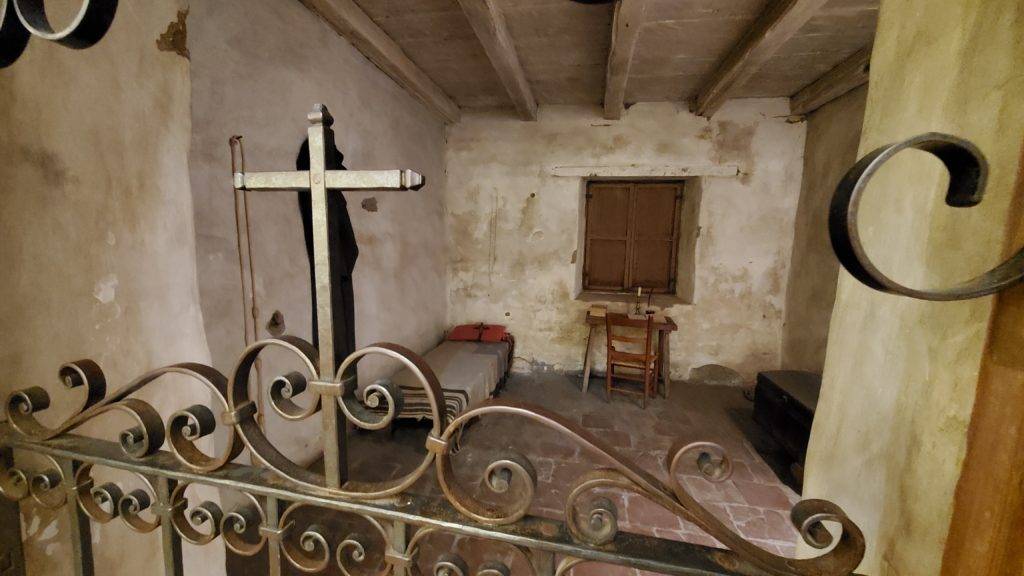
Down this long hallway, guests can view a final collection of exceptionally important relics, including a chalice, a reliquary made for Father Serra by an Indian craftsman, and Father Serra’s silk burial stole.
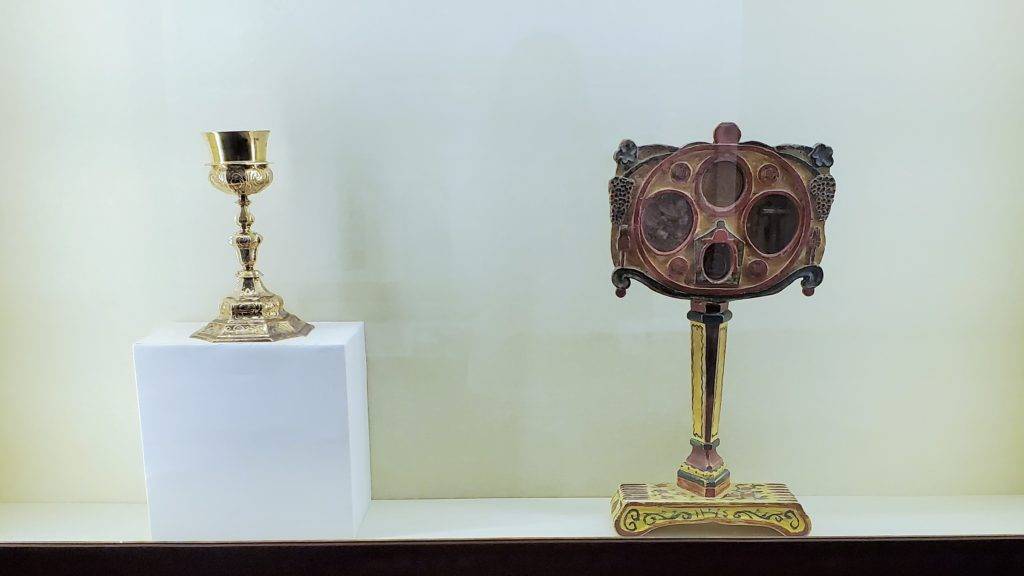
The Carmel Mission Basilica offers a fascinating glimpse back to some of California’s earliest roots through the eyes of the Catholic community. You’ll learn not only about the mission’s rough history but also about the people who passed through the mission and how the California community has helped restore it.
Be sure to stop by if you’re ever in Carmel-by-the-Sea and enjoy a tour of this historic gem!
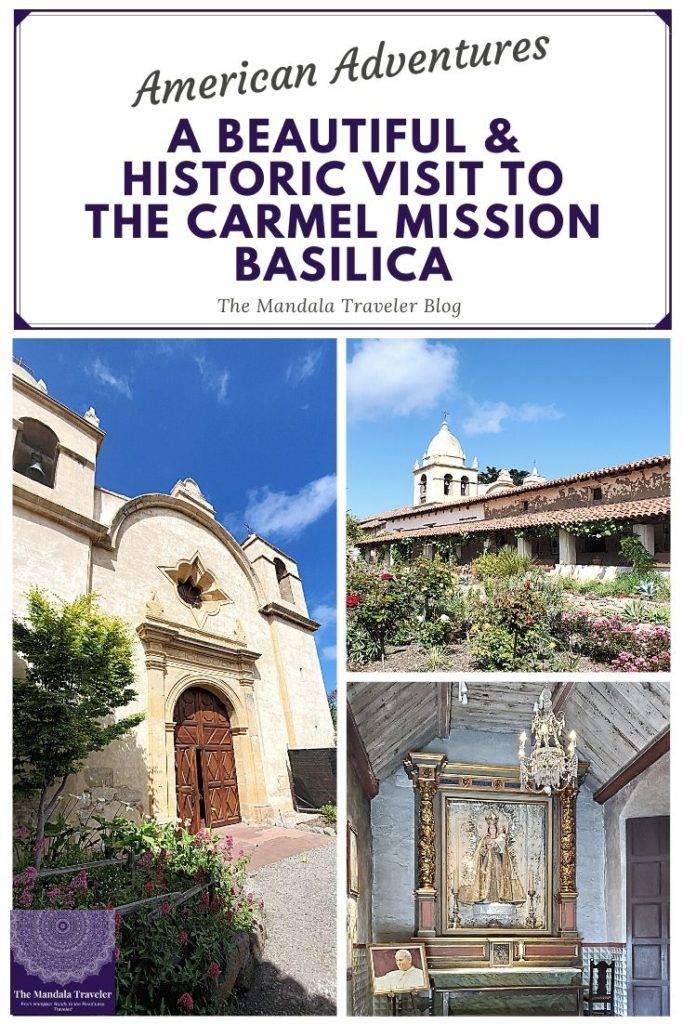
Thanks for stopping by to read this week’s blog! If you enjoyed it, please take a moment to save it to Pinterest and share it on social media! And don’t forget to subscribe to the blog newsletter if you haven’t already done so!
Sign Up for Updates from Carried Away Travels
If you’re planning a trip to the Monterey/Carmel area, be sure to check out my other posts in this mini-series before you go!
- Carmel-by-the-Sea: A Luxury Vacation Destination
- 5 Breathtaking Hwy 1 Stops Between Monterey & Big Sur
- The Best 8 Things to See on 17-Mile Drive
- How to Spend the Perfect Day at Point Lobos State Reserve
- The Hofsas House: A Charming Hotel in a Fairytale Town
Thanks again, and happy travels!
Ready for More? Check Out These Recent Posts!
- How to Spend 3 Days in Dublin & Northern Ireland

- 11 Essential Things to Know Before Visiting Iceland

- My Top 12 Travel Tools For Saving Time & Money

- Dublin Exploration Hack: Big Bus Tours

- The Best 5-Day Colorado Itinerary

- How to Maximize Your Next Workcation: Top Tips

Make Vacation Planning Easier
Download my Vacation Planner or Travel Blogger’s Planner today!
